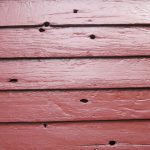2. The Civil War Houses (Carnton, Carter & Lotz)
As most people know, there is a lot of Civil War history right here in Williamson County. The Carnton Plantation and the Carter and Lotz Houses are three of the biggest draws.

Carnton was built in 1826 by former Nashville mayor Randal McGavock (1768-1843). (From its Web site) throughout the nineteenth century it was frequently visited by those shaping Tennessee and American history, including President Andrew Jackson. Carnton grew to become one of the premier farms in Williamson County, Tennessee. Randal McGavock’s son John (1815-1893) inherited the farm upon his father’s death. John McGavock married Carrie Elizabeth Winder (1829-1905) in December 1848 and they had five children, three of whom died at young ages – Martha (1849-1862); Mary Elizabeth (1851-1858); and John Randal (1854). The surviving children were Winder (1857-1907) and Hattie (1855-1932).
Beginning at 4 p.m. on November 30, 1864, Carnton was witness to one of the bloodiest battles of the entire Civil War. Everything the McGavock family ever knew was forever changed. The Confederate Army of Tennessee furiously assaulted the Federal army entrenched along the southern edge of Franklin. The resulting battle, believed to be the bloodiest hours of the Civil War, involved a massive frontal assault larger than Pickett’s Charge at Gettysburg. The majority of the combat occurred in the dark and at close quarters. The Battle of Franklin lasted barely five hours and led to some 9,500 soldiers being killed, wounded, captured, or counted as missing. Nearly 7,000 of that number were Confederate troops. Carnton served as the largest field hospital in the area for hundreds of wounded and dying Confederate soldiers.

The Carter House State Historic Site is a historic house at 1140 Columbia Avenue in Franklin. In that house, (from Wikipedia) the Carter family hid in the basement waiting for the second Battle of Franklin to end. It, like the Lotz House, is a museum. It features artifacts from the Battle of Franklin, along with the story of the Carters.
Fountain Branch Carter completed construction of the house in 1830. The federal style brick farm house was accompanied by several other outbuildings such as the farm office, smokehouse, and kitchen. In the 1850s, Carter built a cotton gin on his property that became a much-remembered landmark during the Second Battle of Franklin in 1864. Though the cotton gin no longer stands, the house and the other three buildings are still intact and illustrate the horror of the Civil War battle with over a thousand bullet holes still visible.
The Carter House played a very important role in the Second Battle of Franklin. Prior to the fight, the house was taken over as the headquarters of the Twenty-Third Army Corps commanded by Brigadier General Jacob D. Cox. Federal breastworks were erected just south of the home extending to both the east and west of Columbia Pike. The Carter family took refuge in the basement of their home during the battle.
The middle son of Fountain Branch Carter, Tod Carter, was mortally wounded in the battle. He was still alive the morning after the battle when he was found and brought to the house. There he lived for several more hours, surrounded by his distraught family. Tod Carter died of his wounds December 2, 1864, and was buried in Rest Haven Cemetery just north of town. He came home for the first time in over three years when he fought at the Battle of Franklin in the 20th Tennessee Infantry. The room where Tod Carter died is one of the highlights of the guided tour of the home today.
Tours of the Carter House and grounds are available daily. The State of Tennessee has owned the house since it was purchased to save it from demolition in 1953. As one of the Tennessee Historical Commission’s 18 State Historic Sites, the property is administered by the Battle of Franklin Trust, a non-profit organization that also oversees Carnton Plantation.

The Lotz House (from their Web site): in 1864, the Union Army, expecting a Confederate attack, began to mobilize large amounts of soldiers in the general area of the Carter and Lotz houses. The Union soldiers cut down every tree they could to prevent Confederate sniping and poisoned much of the water supply. This would prove tragic when the Lotz twins, Julius and Julia, went out to play at a nearby stream and were killed by the poison in the water.
With the Battle of Franklin imminent, the Lotz family took refuge in the cellar of the Carter house because the Lotz house had no substantial or hidden shelter. Johann salvaged as many of his tools as he could before hiding because the tools were necessary to support his family. The battle raged on for five hours and is considered one of the bloodiest battles of the Civil War.
When the two families emerged from shelter, the area was a wasteland – piles of bodies and evidence of brutal hand-to-hand combat. The Lotz house was still standing, though damaged. The south wall had been blasted off, most likely by Confederate forces. Cannon ball holes can be seen inside the house to this day. Johann was quick to repair the house.
The house became a field hospital after the battle. To this day a visitor can see many bloodstains on the floors and walls all over the house.



















